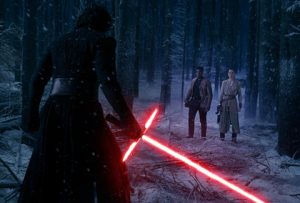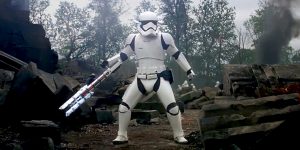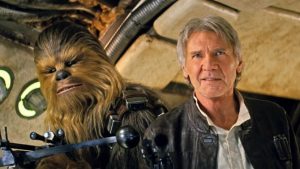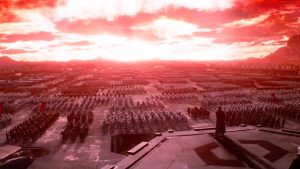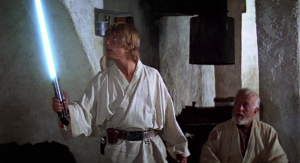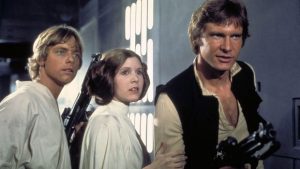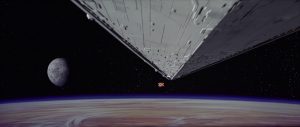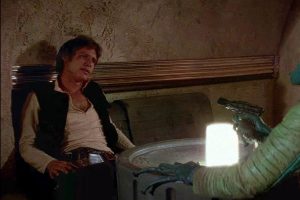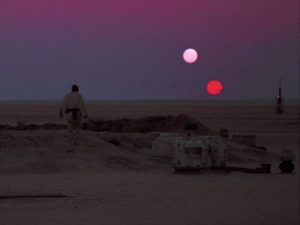SPOILERS FOR STAR WARS: REBELS AND JEDI: FALLEN ORDER AHEAD!
An intergalactic manhunt is afoot in the first teaser trailer for Lucasfilm’s long-awaited Kenobi series, coming to Disney+ this May on the 45th anniversary of Obi-Wan Kenobi’s very first appearance in Star Wars: Episode IV: A New Hope (at the time just Star Wars). Kenobi himself is one of the two primary targets of this manhunt, but the series looks to be so broad in scope from the trailer alone that I wouldn’t be at all surprised if several other Jedi show up – hiding in various far-flung corners of the galaxy, but leaving in their wake a “trail of compassion” that corrupted Jedi named Inquisitors know how to follow to its source.
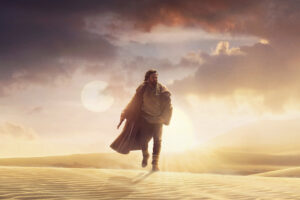
This teaser trailer, with its heavy focus on the characters around Kenobi and their actions, gives me the distinct feeling that Obi-Wan Kenobi isn’t the driving force behind most of the main events in this series, which doesn’t surprise me all that much. I mean, his name is in the title, so I have to assume he’s at least somewhat integral to the story Lucasfilm has chosen to tell through his unique viewpoint, but (a) they also marketed The Book Of Boba Fett as a Boba Fett show, and…that was a lie, and (b) it’s not like Kenobi is a character who can freely move around the galaxy the same way Din Djarin can in The Mandalorian.
I mean that literally (for Kenobi to leave Tatooine even briefly gives the Inquisitors so many opportunities to track him that it’s a risk he can surely only afford to take once or twice), but I also mean it in the sense that Kenobi’s place in the Star Wars canon is fixed, whereas Din Djarin’s is fluid. No matter what actions Kenobi takes, he will still need to end up back on Tatooine in hiding because…that’s where we meet him in A New Hope. Wherever his journey takes him, he’s tethered to Tatooine – as is the Star Wars franchise as a whole, but that’s a different conversation.
When the source material doesn’t provide a solution to this problem (and in this case there’s very little source material, and even less of it is still canon), the answer is always to create original characters who can move freely, and who aren’t quite as limited in what they can say or do. Kenobi gives us the Inquisitor Reva, seemingly an antagonist but one with her own point-of-view and a large role that transcends the action on Tatooine and at the Citadel Inquisitorius. That also puts her in a position where she could bridge the gap between Obi-Wan Kenobi and his nemesis Darth Vader without the two ever needing to interact onscreen.
I fear that the temptation to just go full fan-service will prove too strong for Star Wars to resist, and that Kenobi and Vader will actually clash in a lightsaber battle that might be epic to witness, but will be robbed of any stakes by the knowledge that both these characters walk away unscathed, physically and emotionally – because by the time of A New Hope, when Vader tells Kenobi that “when I left you, I was but the learner, now I am the master”, he’s explicitly referring to their duel in Revenge Of The Sith, and Kenobi doesn’t rebut that statement (well, he does, but only to tell Vader that he’s become a “master of evil”, not to remind him that they actually had some other duel the Sith lord has forgotten about).
So any fight scene inserted between the two films must ultimately make so little impact on the characters involved that they fail to even remember it a mere fifteen years later, which makes it unnecessary filler – worse than a retcon, as it literally adds nothing to their dynamic and would instead strip away a layer of what was already there. Don’t get me wrong, I’m always down for a lightsaber battle, but if Kenobi has to fight anyone, I’d prefer it to be Reva or another Inquisitor – perhaps even the Grand Inquisitor.
Set to make his live-action debut in Kenobi after first appearing in the animated series Star Wars: Rebels, the Grand Inquisitor was a Pau’an Jedi Knight who turned to the Dark Side and assisted Darth Vader in hunting Jedi during the twenty years between Revenge Of The Sith and A New Hope. He ultimately killed himself after failing to capture the Jedi Kanan Jarrus, deeming that Vader’s wrath would be worse than death, but Kenobi catches up with him at the height of his reign of terror.

As Rebels fans have been quick to point out, he looks a bit…different. Not worse, necessarily, just…different. His head is more round than it is elongated, which has led to a lot of (probably unfair) comparisons to the live-action Pau’ans who appeared in Revenge Of The Sith with elongated heads and looked more like the Grand Inquisitor than Kenobi‘s version of the character. But what’s important to remember is that those Pau’ans were side characters who never did any fighting. I’m not a stunt choreographer, but I have a sneaking suspicion that top-heavy Pau’an heads, much like Togruta tendrils, aren’t exactly conducive to jumping and twirling and stunts in general.
Ultimately, as long as the Grand Inquisitor is appropriately terrifying in live-action, that’s all that really matters. On the flip-side, Kenobi has an opportunity to flesh out the Grand Inquisitor’s character – and all the Inquisitors, for that matter – in a way that Rebels never did. The Jedi: Fallen Order video game franchise has done slightly more in that regard, even featuring a morally conflicted Inquisitor named Trilla Suduri, but we still know surprisingly little about these former Jedi who chose to devote themselves to the task of hunting and killing people who used to be their friends, mentors, and apprentices.
The Grand Inquisitor, for instance, was a Jedi Temple Guard who fell to the dark side after witnessing the Jedi Order’s harsh treatment of Ahsoka Tano during the Clone Wars. His real name, the name of his Jedi master, and all details regarding his training are a mystery. Rebels‘ Seventh Sister and Fifth Brother, the latter of whom will reappear in Kenobi, are even more enigmatic. But the fact that Reva even has a name attached to her character, a name that represents a tangible attachment to her past life (one she’s perhaps unwilling to sever?), gives me hope that, like Trilla Suduri, she’ll be a three-dimensional character in stark contrast to her uniform Brothers and Sisters.
Pulling the strings behind all the Inquisitors is the shadowy figure of Darth Vader, whose true identity is still a mystery at this point in the timeline – one to which audiences already know the answer, mind you, but watching characters in-universe come to the same realization on their own never fails to make me emotional. And if Ahsoka’s reaction when she found out was devastating, then the mixture of guilt, anger, and heartbreak that Obi-Wan Kenobi is sure to feel when he first hears of the reappearance of Darth Vader and starts connecting dots is going to be…a lot.
Interestingly, the question of when and how Kenobi discovered that Anakin Skywalker was still alive following the events of Revenge Of The Sith has never properly been answered – not by the current Star Wars canon, at least. That offers the Kenobi series at least one key plot-point around which to construct an early episode, leaving several more in which the character can grapple with the ramifications of his discovery and ultimately make up his mind to seek out Darth Vader, who at this point in the timeline is still the stuff of rumors; the full extent of his power having not yet been revealed to the galaxy.
I know everyone is gearing up for the rematch of the century between Kenobi and Vader, and I also know that the discourse around this show will be unbearable because the two characters will either never meet, leading a certain demographic of fans to complain that their demands aren’t being met and that Star Wars (but like, especially Kathleen Kennedy) hates the fans, or they will meet, and it will create a whole bunch of weird plot-holes, or they’ll fight in some kind of vision and fans will be split down the middle on whether they’re satisfied by it. It’s gonna be a mess regardless.

But hey, I love a good mess. And frankly, without Jon Favreau attached in any capacity, I actually have higher hopes for Kenobi than for most of Lucasfilm’s other Disney+ series’, which have recently begun to suffer from their monotonous stylistic consistency and obsession with Tatooine, as evidenced by The Book Of Boba Fett‘s failure to hold audiences’ interest (including mine). Kenobi, ironically, is the one series that arguably ought to stick to a Tatooine setting but is instead choosing to take its famously cloistered protagonist on one last spin around the galaxy – and we’ll just have to wait and see whether this approach pays off.
Trailer Review: 8/10
